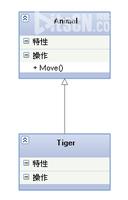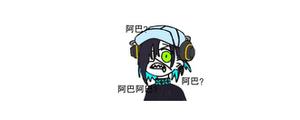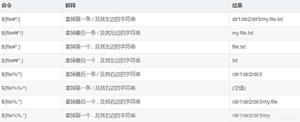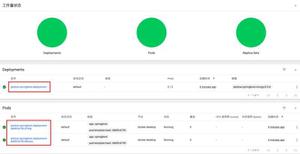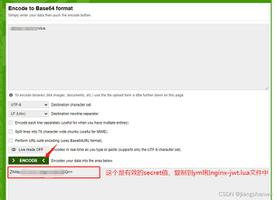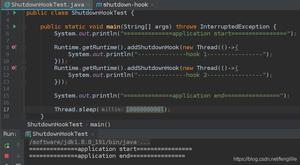Tkinter-如何使用自动补全功能创建一个组合框
是否可以创建一个在您键入时使用列表中最接近的项目进行更新的组合框?
例如:
A = ttk.Combobox()A['values'] = ['Chris', 'Jane', 'Ben', 'Megan']
然后,您在组合框中键入“ Chr”,我希望它自动填写“ Chris”。
回答:
tkinterWiki包含一个自动完成文本框的代码,但是由于您需要一个组合框,因此可以使用此代码(您正在寻找AutocompleteCombobox)。
"""tkentrycomplete.py
A Tkinter widget that features autocompletion.
Created by Mitja Martini on 2008-11-29.
Updated by Russell Adams, 2011/01/24 to support Python 3 and Combobox.
Updated by Dominic Kexel to use Tkinter and ttk instead of tkinter and tkinter.ttk
Licensed same as original (not specified?), or public domain, whichever is less restrictive.
"""
import sys
import os
import Tkinter
import ttk
__version__ = "1.1"
# I may have broken the unicode...
Tkinter_umlauts=['odiaeresis', 'adiaeresis', 'udiaeresis', 'Odiaeresis', 'Adiaeresis', 'Udiaeresis', 'ssharp']
class AutocompleteEntry(Tkinter.Entry):
"""
Subclass of Tkinter.Entry that features autocompletion.
To enable autocompletion use set_completion_list(list) to define
a list of possible strings to hit.
To cycle through hits use down and up arrow keys.
"""
def set_completion_list(self, completion_list):
self._completion_list = sorted(completion_list, key=str.lower) # Work with a sorted list
self._hits = []
self._hit_index = 0
self.position = 0
self.bind('<KeyRelease>', self.handle_keyrelease)
def autocomplete(self, delta=0):
"""autocomplete the Entry, delta may be 0/1/-1 to cycle through possible hits"""
if delta: # need to delete selection otherwise we would fix the current position
self.delete(self.position, Tkinter.END)
else: # set position to end so selection starts where textentry ended
self.position = len(self.get())
# collect hits
_hits = []
for element in self._completion_list:
if element.lower().startswith(self.get().lower()): # Match case-insensitively
_hits.append(element)
# if we have a new hit list, keep this in mind
if _hits != self._hits:
self._hit_index = 0
self._hits=_hits
# only allow cycling if we are in a known hit list
if _hits == self._hits and self._hits:
self._hit_index = (self._hit_index + delta) % len(self._hits)
# now finally perform the auto completion
if self._hits:
self.delete(0,Tkinter.END)
self.insert(0,self._hits[self._hit_index])
self.select_range(self.position,Tkinter.END)
def handle_keyrelease(self, event):
"""event handler for the keyrelease event on this widget"""
if event.keysym == "BackSpace":
self.delete(self.index(Tkinter.INSERT), Tkinter.END)
self.position = self.index(Tkinter.END)
if event.keysym == "Left":
if self.position < self.index(Tkinter.END): # delete the selection
self.delete(self.position, Tkinter.END)
else:
self.position = self.position-1 # delete one character
self.delete(self.position, Tkinter.END)
if event.keysym == "Right":
self.position = self.index(Tkinter.END) # go to end (no selection)
if event.keysym == "Down":
self.autocomplete(1) # cycle to next hit
if event.keysym == "Up":
self.autocomplete(-1) # cycle to previous hit
if len(event.keysym) == 1 or event.keysym in Tkinter_umlauts:
self.autocomplete()
class AutocompleteCombobox(ttk.Combobox):
def set_completion_list(self, completion_list):
"""Use our completion list as our drop down selection menu, arrows move through menu."""
self._completion_list = sorted(completion_list, key=str.lower) # Work with a sorted list
self._hits = []
self._hit_index = 0
self.position = 0
self.bind('<KeyRelease>', self.handle_keyrelease)
self['values'] = self._completion_list # Setup our popup menu
def autocomplete(self, delta=0):
"""autocomplete the Combobox, delta may be 0/1/-1 to cycle through possible hits"""
if delta: # need to delete selection otherwise we would fix the current position
self.delete(self.position, Tkinter.END)
else: # set position to end so selection starts where textentry ended
self.position = len(self.get())
# collect hits
_hits = []
for element in self._completion_list:
if element.lower().startswith(self.get().lower()): # Match case insensitively
_hits.append(element)
# if we have a new hit list, keep this in mind
if _hits != self._hits:
self._hit_index = 0
self._hits=_hits
# only allow cycling if we are in a known hit list
if _hits == self._hits and self._hits:
self._hit_index = (self._hit_index + delta) % len(self._hits)
# now finally perform the auto completion
if self._hits:
self.delete(0,Tkinter.END)
self.insert(0,self._hits[self._hit_index])
self.select_range(self.position,Tkinter.END)
def handle_keyrelease(self, event):
"""event handler for the keyrelease event on this widget"""
if event.keysym == "BackSpace":
self.delete(self.index(Tkinter.INSERT), Tkinter.END)
self.position = self.index(Tkinter.END)
if event.keysym == "Left":
if self.position < self.index(Tkinter.END): # delete the selection
self.delete(self.position, Tkinter.END)
else:
self.position = self.position-1 # delete one character
self.delete(self.position, Tkinter.END)
if event.keysym == "Right":
self.position = self.index(Tkinter.END) # go to end (no selection)
if len(event.keysym) == 1:
self.autocomplete()
# No need for up/down, we'll jump to the popup
# list at the position of the autocompletion
def test(test_list):
"""Run a mini application to test the AutocompleteEntry Widget."""
root = Tkinter.Tk(className=' AutocompleteEntry demo')
entry = AutocompleteEntry(root)
entry.set_completion_list(test_list)
entry.pack()
entry.focus_set()
combo = AutocompleteCombobox(root)
combo.set_completion_list(test_list)
combo.pack()
combo.focus_set()
# I used a tiling WM with no controls, added a shortcut to quit
root.bind('<Control-Q>', lambda event=None: root.destroy())
root.bind('<Control-q>', lambda event=None: root.destroy())
root.mainloop()
if __name__ == '__main__':
test_list = ('apple', 'banana', 'CranBerry', 'dogwood', 'alpha', 'Acorn', 'Anise' )
test(test_list)
以上是 Tkinter-如何使用自动补全功能创建一个组合框 的全部内容, 来源链接: utcz.com/qa/424152.html

